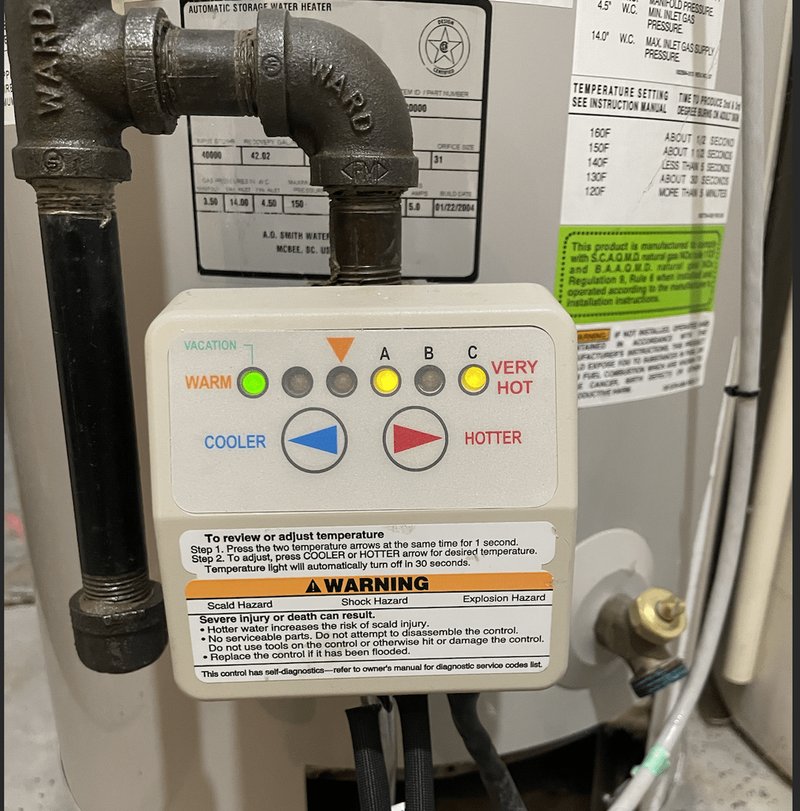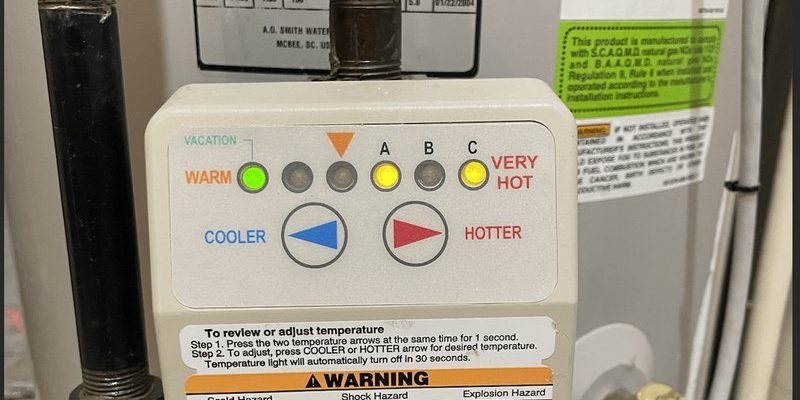
The error code E3 on an A.O. Smith water heater is a signal from the device that there’s an issue with the water temperature sensor or thermostat. Think of the thermostat as the brain of your water heater. It’s responsible for knowing when the water’s too cold and when it’s too hot, keeping your showers just right. So, when you see E3, it’s like the thermostat is raising a virtual hand and saying, “Something’s not quite right in here!” Understanding this code is the first step toward getting back to those blissful, warm showers.
Understanding the Function of the Thermostat
The thermostat in your water heater is like a diligent gatekeeper, ensuring temperatures stay within a comfortable range. But how does it really work? Well, it’s pretty much the same concept as the thermostat you use to control the heating and cooling in your house. Just as your home’s thermostat triggers the furnace or AC based on the temperature setting, the thermostat in the water heater senses water temperature and either fires up the heating element or tells it to cool down.
When things are running smoothly, this process is seamless. However, if there’s a hiccup—like the thermostat not reading the temperature correctly—it can lead to incorrect heating cycles. Suddenly, you might find yourself in the shower with a water temperature that’s far from ideal. That’s when the E3 error code shows up as a protective measure, halting operation to prevent any damage or further inconsistencies in water temperature.
When your appliance displays this error, the issue might be as simple as a loose wire, or it might require a closer look at the temperature sensor or the thermostat itself. Whether it’s a quick fix or a more involved repair, understanding that it’s about temperature reading is half the battle won in troubleshooting your A.O. Smith water heater.
Common Causes of the E3 Error Code
Now that we know the E3 error relates to the thermostat and temperature sensor, let’s delve into what might actually cause this code to pop up. Here’s the deal: there can be several culprits, ranging from simple to complex.
Firstly, loose or damaged wiring is a common offender. Imagine the wiring as the communication lines between your phone and the internet; if those lines get disconnected or frayed, signals can’t get through. Similarly, frayed or loose wiring can impede the proper transmission of information between your water heater’s components, triggering an error.
Secondly, a faulty temperature sensor might be the issue. The sensor itself could be malfunctioning, providing incorrect temperature readings. It’s like trying to cook with a broken thermometer; without accurate readings, you can’t get the job done right.
Lastly, a failing thermostat is also a possibility. Thermostats can sometimes stop working properly after years of use, much like an old car part wearing out over time. If the internal workings of the thermostat are worn or damaged, they might not relay the correct temperature instructions to your water heater.
Steps to Resolve the E3 Error Code
Once you’ve identified the possible causes of the E3 error code, it’s time to roll up your sleeves and dive into some troubleshooting. Here’s a step-by-step guide on how you might address the issue:
First, make sure to turn off the power to the water heater before attempting any inspection. Safety first! Check all the wiring connections to ensure they’re secure and in good condition. If you spot any wear and tear, it might be time to replace those wires.
Next, assess the temperature sensor. Sometimes, the sensor can get knocked out of place or be malfunctioning. A gentle adjustment or replacement might be necessary. Think of it like replacing a faulty thermometer in your kitchen—it’s a simple swap to ensure accurate readings.
If the wiring and sensor seem fine, the thermostat itself could be the problem. While some may feel comfortable adjusting or replacing this themselves, it often requires a professional touch. It’s like changing the engine in a car; sometimes, expert hands know best.
After you’ve taken these steps, power the water heater back on and check if the error code persists. If all else fails, consider reaching out to a professional technician. Regular maintenance and inspection can prevent these issues down the line, ensuring you enjoy uninterrupted warmth.
Preventative Tips and Final Thoughts
Dealing with error codes can be annoying, but each experience is a learning opportunity. To minimize future disruptions, consider setting a regular check-up schedule for your water heater. Just like annual doctor visits keep you in good health, routine maintenance keeps your appliances running smoothly.
You might be wondering if you can avoid such errors altogether. While you can’t prevent every possible issue, investing in quality components and adhering to proper installation practices can lessen the likelihood of errors. Regularly inspecting wiring and sensors for signs of wear can catch small issues before they escalate into larger problems.
In the end, understanding the E3 error code isn’t just about fixing one problem; it’s about increasing your confidence in handling household appliances. When your A.O. Smith water heater shows an E3, remember it’s like a built-in system check, ensuring everything runs as it should. With a little knowledge and a touch of preventative care, those blissfully warm showers will be yours to enjoy once more.
